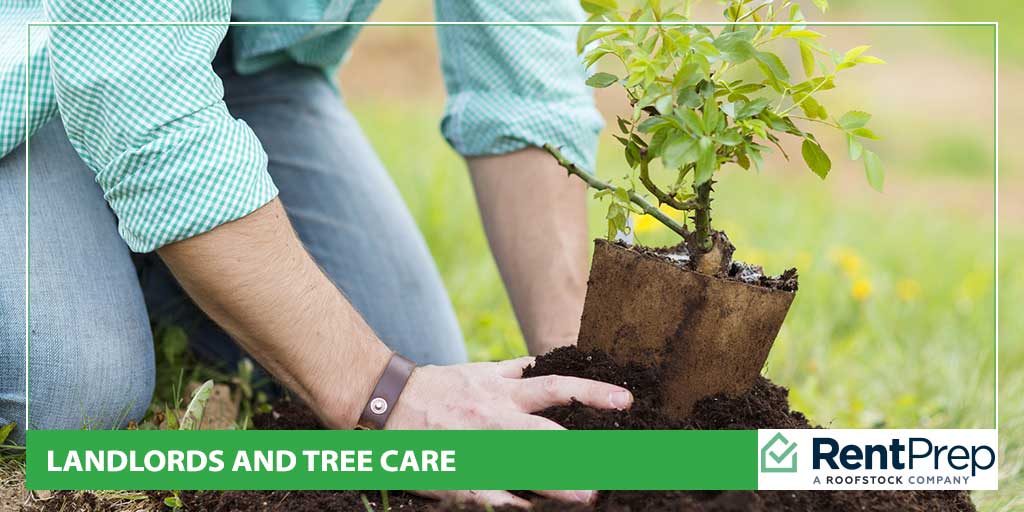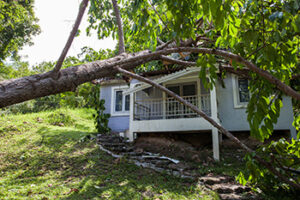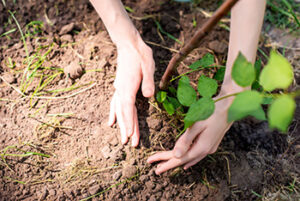
Tree care is often the last thing on a landlord’s mind, thanks to a million other demands on their time. Property owners are responsible for the care and maintenance of everything on the property, but many just focus on the house itself and ignore things like sheds, fences and even trees. But trees can really enhance property values, save on energy costs, and help the environment. With all these benefits, it’s no wonder that trees are highly desirable for rental homes.
A reason landlords should keep up on tree care
Landlords should definitely pay attention to trees located on a rental property. According to a report by Arbor National Mortgage & American Forests, mature trees have a strong to moderate impact on the property value of a home. Another study showed that mature trees on a property can add up to $10,000 in appraisal value. Still another report verified that property owners get up to 100% return on landscaping investments, including trees. All this and more means that putting in the effort and time into tree care can reward property owners and landlords in a big way.
While healthy trees are definitely an asset, big problems can arise when trees die or become diseased. Not only can such a tree make the property look bad, but it can actually be a safety hazard. In the event that the tree or a limb from the tree breaks off and falls on someone or something, the landlord is now dealing with a potential liability issue. So as you can see, there are many reasons why landlords should care about trees on their rental property.
Is landlord responsible for fallen tree?

Typically a fallen tree is going to be the responsibility of the landlord as they own the tree. The first line of defense should be insurance.
If the tree fell from natural causes in a storm insurance should cover damages unless “acts of god” are not covered.
In the situation where the landlord and tenant can not come to agreement for who’s insurance should pay they should seek outside counsel. This may happen in a situation where a tree lands on the tenant’s car and neither party wants their insurance to cover the costs.
Basic Tree Care
While some people have a “plant it and forget it” approach to trees, a smart landlord will take tree care seriously on their property, just as they would care for any other permanent structure. Learning some basic tree care is the first step to having healthy, beautiful trees.
Planting
Enhancing a property by planting trees is a great idea, but without the proper techniques for planting, the tree has little chance of making it past the first year.
- When preparing the spot for a new tree, keep the root ball watered so the new tree stays healthy.
- Determine the best place for a new tree, making plans for the tree’s ultimate height and width. This means keeping it far enough away from pipes, overhead lines, and structures.
- Dig the hole so that it is one and a half times the diameter of the root ball, and only dig the hole as deep as the root ball, never deeper.
- Cut away any strings or material holding the root ball together, and spread out the roots in the hole.
- When refilling the hole around the root ball, make sure there is no compacted soil. Break it up before putting it back.
- Water the soil to help it settle around the newly planted tree, but avoid stomping or tamping the soil down. It’s best if it settles naturally.
Pruning
Pruning a grown or growing tree is essential to eliminate dead or weak branches and to boost the tree’s health. Doing it right can help a tree to thrive, but trimming and pruning the wrong way can put it on the fast track to problems.
- Pruning incorrectly or over pruning can hurt or damage a tree, and even kill it.
- There are different reasons to prune, such as to thin out some branches to reduce density, reduce the height or the width of a tree from hitting structures, and to remove dead or diseased branches.
- When pruning a branch, it’s best to cut it off just above the branch collar. Too high or too low can cause damage or weaken the tree.
- Never cut all the top branches of a tree off, known as topping, because it could damage the tree and prevent it from growing.
- Never cut too many inner branches from a tree, as it can weaken the tree.
- Here is a detailed guide to pruning and trimming trees. When in doubt about pruning a tree, landlords should consult a professional.
Soil Health

A tree is only as healthy as the soil it’s growing in, so taking steps to ensure the ground is ideal for growing a tree is important.
- Avoid using pesticides and other chemicals in the soil.
- The best soil is dark, full of earthworms and is generally free of big rocks.
- Poor drainage can affect a tree’s health by causing waterlogged roots, so take steps to ensure proper drainage by eliminating compaction and even mixing in different types of soil material to increase soil health.
- Get a soil analysis done by the local extension office to find out things like the pH levels and composition of soil. The soil can then be amended for optimal tree growth.
Pests and Disease
There’s no surefire way to keep pests and disease away from a tree, but there are several things that can be done to reduce the risks.
- Healthy trees are more resilient to pests and disease, so proper soil, water and pruning is essential.
- Call in a professional arborist to do preventative maintenance on all the trees on the property so they can spot problems before they grow too large and hard to combat.
- Overcrowding can cause tree stress, as can planting the wrong type of tree for the soil or environment.
- Improper planting techniques can increase the risk of attracting pests and diseases.
- Poor pruning techniques will weaken the tree and open the door for pest infestations.
It’s easy to see why caring for trees on a rental property is so important and isn’t something that can be ignored. Landlords and property owners would never think of neglecting part of the rental home that needed care and maintenance, and they should think no differently when it comes to trees and tree maintenance.
Tree-Related Accidents
Tree care is a big deal because a healthy tree can impact the value and appeal of a rental property. An unhealthy tree is a drain on a property’s visual appearance and in extreme cases it can cause significant damage if it comes down.
In the event of a storm, with wind, hail, lightning or ice, it’s possible for a tree or tree branch to come down and land on the rental home or else a neighbor’s property. When this happens, landlords may wonder what their insurance will cover, if anything. It can get a little confusing, so it is a good idea to know the basics before such an event occurs.
Here are a few basic scenarios surrounding fallen trees and a rental property.
- If a tree falls on the landlord’s structure, any damages should be covered by the homeowner’s insurance. Of course, this happens only if the tree was well-cared for and healthy.
- If a healthy tree falls onto a neighbor’s structure, their homeowner’s insurance should take care of those damages. Similarly, if a neighbor’s tree fell onto a landlord’s rental property their own insurance would cover the cost of repairs.
- If the tree was diseased, damaged or otherwise not cared for, and it fell and caused damage, the landlord’s own insurance company may find that they were indeed negligent, and raise premiums.
Tree damage is all about what the home owner did to protect structure from any damage. If there is any negligence involved, the landlord can be found responsible via a potential lawsuit, even. Landlords that ignore trees that need attention may find themselves with a fallen tree after the latest storm, plus a lot of financial headaches.
Trees are a Good Investment
All in all, trees are a big part of how a property looks, and they can have a big impact on everything from energy costs to aesthetics. Responsible landlords should learn all they can about tree care like planting, maintaining and treating the trees on their property to ensure these leafy assets stay around for a long time.

